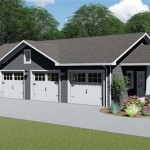Sulcata Tortoise House Plans
Sulcata tortoises, also known as African spurred tortoises, are among the largest tortoise species globally, reaching impressive sizes in adulthood. This considerable size necessitates specific housing requirements far exceeding those suitable for smaller tortoise species. Properly designed sulcata tortoise house plans are crucial for their health, wellbeing, and longevity.
A key aspect of planning a sulcata house is understanding their natural habitat. These tortoises originate from the southern edge of the Sahara Desert, an environment characterized by hot, dry conditions. Replicating these conditions as closely as possible is essential. This includes providing ample space, a warm basking area, and a substrate that allows for natural burrowing behaviors.
Space is paramount when considering sulcata tortoise house plans. Unlike smaller species content with compact enclosures, sulcatas require substantial room to roam and explore. As hatchlings, they may seem small, but they grow rapidly. Adult sulcatas can exceed two feet in length and weigh over 100 pounds. Therefore, planning for their eventual size is critical. An indoor enclosure for an adult sulcata should ideally be at least 8 feet long, 4 feet wide, and 3 feet high.
Outdoor enclosures offer sulcatas opportunities for natural grazing and exercise. A secure outdoor area, ideally much larger than the indoor enclosure, is highly beneficial. Fencing should be sturdy and deeply buried to prevent escape. Sulcatas are powerful diggers and can easily undermine shallow fences. The outdoor space should also include a sheltered area for protection from the elements, including rain and excessive sun.
Temperature regulation is another critical element in sulcata tortoise house plans. These reptiles require a temperature gradient within their enclosure, allowing them to thermoregulate effectively. A basking area should reach temperatures between 90 and 100°F (32-38°C). This can be achieved using a heat lamp positioned securely above the basking spot. The cooler end of the enclosure should maintain a temperature between 70 and 80°F (21-27°C).
Maintaining appropriate humidity levels is also essential. While sulcatas thrive in arid environments, overly dry conditions can lead to health issues, particularly respiratory problems. Humidity levels within the enclosure should ideally range between 40% and 50%. A shallow dish of water can help to maintain humidity. Regularly misting the enclosure can also be beneficial, particularly during the warmer months.
The substrate within the enclosure should mimic the tortoise's natural environment. A mixture of soil and sand allows for natural burrowing behaviors, which are essential for their physical and mental wellbeing. Avoid using substrates like cedar or pine shavings, as these can be toxic to tortoises. The substrate should be deep enough to allow for digging and should be kept dry to prevent respiratory issues.
Providing appropriate lighting is crucial for the health and growth of sulcata tortoises. In addition to a heat lamp for the basking area, a UVB lamp is essential for proper calcium metabolism. UVB light allows the tortoise to synthesize vitamin D3, which is necessary for calcium absorption. Without adequate UVB exposure, metabolic bone disease can develop, leading to serious health problems.
Food and water provision should be carefully considered in sulcata tortoise house plans. A shallow, sturdy dish should be provided for water, allowing the tortoise to drink and soak. The dish should be heavy enough to prevent tipping and easy to clean. Sulcatas are herbivores and require a diet rich in high-fiber grasses and weeds. Avoid feeding fruits and vegetables regularly, as these can disrupt their digestive system.
Enrichment elements are important additions to any sulcata tortoise enclosure. These can include rocks for climbing, hides for shelter, and varied substrate textures for exploration. These additions provide mental stimulation and encourage natural behaviors, contributing to the overall wellbeing of the tortoise.
Regular cleaning and maintenance of the enclosure are essential for preventing disease and ensuring a healthy environment. Remove soiled substrate regularly and disinfect the enclosure periodically. Check and replace UVB bulbs every 6-12 months, as their output diminishes over time. Careful attention to these details will contribute significantly to the health and longevity of the sulcata tortoise.

Housing Ojai Sulcata Project

Custom Built Tortoise House Set Up For Heat 42 X 36 To Orders

Diy Heated Tortoise House Petdiys Com Sulcata Tortoises

Sulcata Tortoise Diy Hatchling Enclosure Habitat Tortoises

How To Build An Outdoor Tortoise Enclosure Exoticdirect

100 Best Outdoor Tortoise Enclosure Ideas

How To Care For Your Sulcata Tortoise Enclosure Tortoises House

Easy Shelter Build For Sulcata Tortoises Pt 2

Ideas For Outdoor Enclosures Tortoise Enclosure Habitat

Diy Tortoise House How To Build Huge Enclosure








